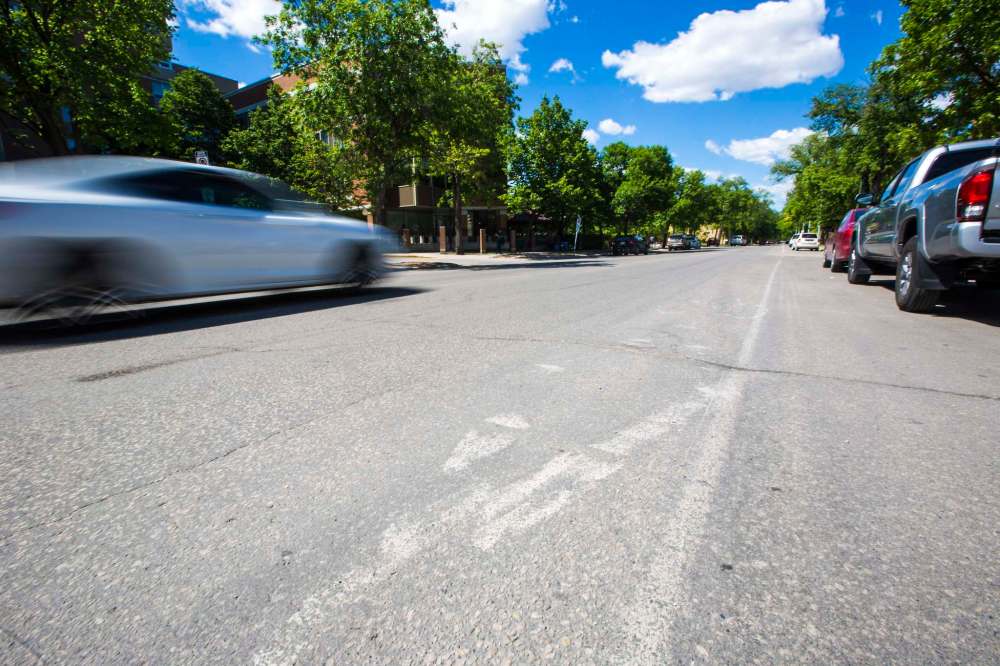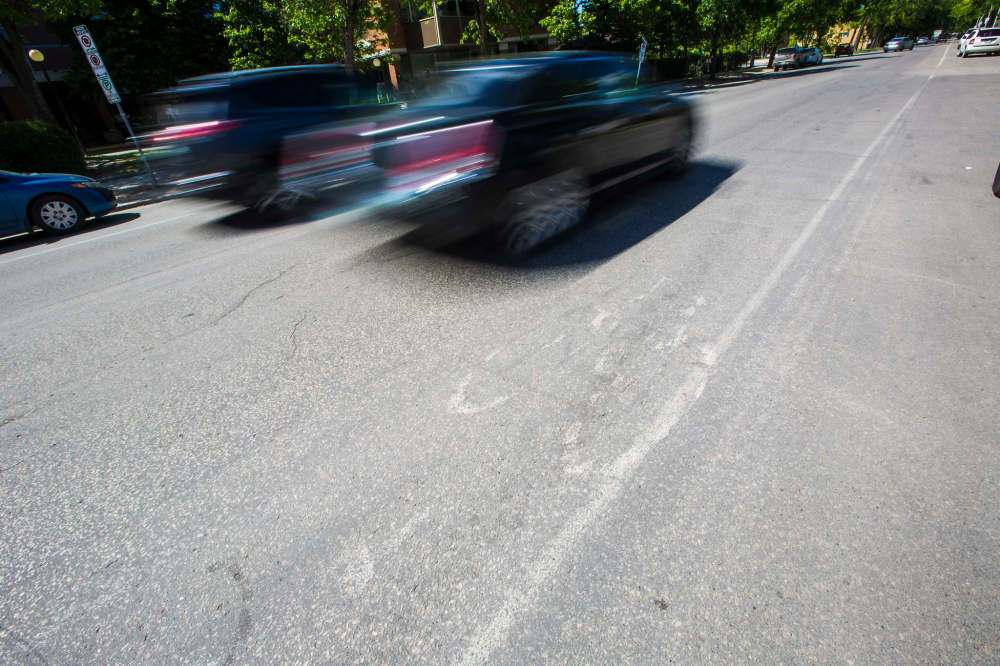Disappearing bike lanes need new paint
Lack of visible lines a safety concern for cyclists
Advertisement
Read this article for free:
or
Already have an account? Log in here »
To continue reading, please subscribe:
Monthly Digital Subscription
$0 for the first 4 weeks*
- Enjoy unlimited reading on winnipegfreepress.com
- Read the E-Edition, our digital replica newspaper
- Access News Break, our award-winning app
- Play interactive puzzles
*No charge for 4 weeks then price increases to the regular rate of $19.00 plus GST every four weeks. Offer available to new and qualified returning subscribers only. Cancel any time.
Monthly Digital Subscription
$4.75/week*
- Enjoy unlimited reading on winnipegfreepress.com
- Read the E-Edition, our digital replica newspaper
- Access News Break, our award-winning app
- Play interactive puzzles
*Billed as $19 plus GST every four weeks. Cancel any time.
To continue reading, please subscribe:
Add Free Press access to your Brandon Sun subscription for only an additional
$1 for the first 4 weeks*
*Your next subscription payment will increase by $1.00 and you will be charged $16.99 plus GST for four weeks. After four weeks, your payment will increase to $23.99 plus GST every four weeks.
Read unlimited articles for free today:
or
Already have an account? Log in here »
Hey there, time traveller!
This article was published 12/06/2019 (2366 days ago), so information in it may no longer be current.
Julie Penner rides her bike to work every day. But lately, she said she feels less safe on her commute from Wolseley to the Exchange District because the painted bike lane she uses on Sherbrook Street has faded and chipped away, in certain spots to almost nothing.
“It’s like this every year. I’m surprised (it) isn’t given more of a priority,” Penner said.
The City of Winnipeg did not respond to a request for comment.

The city’s website page on lane-marking says the process begins in mid-April, when it’s warm enough for paint to adhere to the road. The page says crews work clockwise around Winnipeg, starting north of the Assiniboine River.
Penner said she’s confused why the city schedules the re-painting based on geography instead of on how often certain bike lanes are used.
Mark Cohoe, executive director of cycling advocacy group Bike Winnipeg, said he would like to see the city make more of an effort to keep cyclists in mind when making the schedules.
“The bike lanes should be one of the city’s priorities. If you’re on a bike, you’re one of the most vulnerable people out there,” he said.
Cohoe is encouraged by steps the city has taken lately to create roads with expanded bike lanes and bicycle-specific traffic signals that have cyclists in mind, but he would like to see a more proactive approach to maintaining infrastructure that will help keep riders safe on the road.
“It definitely does make a difference in terms of safety to have the bike lane there, but it’s only there if it’s painted and visible. If it isn’t there, the drivers are less likely to respect it,” he said.
While painted bike lanes don’t give cyclists the same physical protection from vehicles as ones that are protected with barriers, they let drivers know to be aware that cyclists could be nearby, Penner said, adding with the lane on Sherbrook disappearing, she has noticed cars inching closer to her on the road.
“Cars are used to responding to paint on the road. I’m a driver, too. You respond to that. (If) there’s a solid line, then you don’t cross it,” she said. “They’re either unaware of the bike lane, or they don’t respect it as much because there’s just nothing on the ground.”

Recent city actions that support cycling infrastructure are positive moves, but there are still gaps to fill, Penner said.
“Right now, there’s bits and pieces where you can get downtown relatively safely in some areas, but not in others. It’s definitely requiring patience from the cycling community, but I do feel hopeful about it,” she said.
Because the lanes will get re-painted eventually, Penner said it might not seem like a big deal, but in the meantime, she said she’ll feel a little less safe when riding her bike.
“It’s the lowest form of cycling protection, just paint on the ground, but even that is better than having nothing,” she said. “And I do feel like cars notice when it’s there.”
caitlyn.gowriluk@freepress.mb.ca

